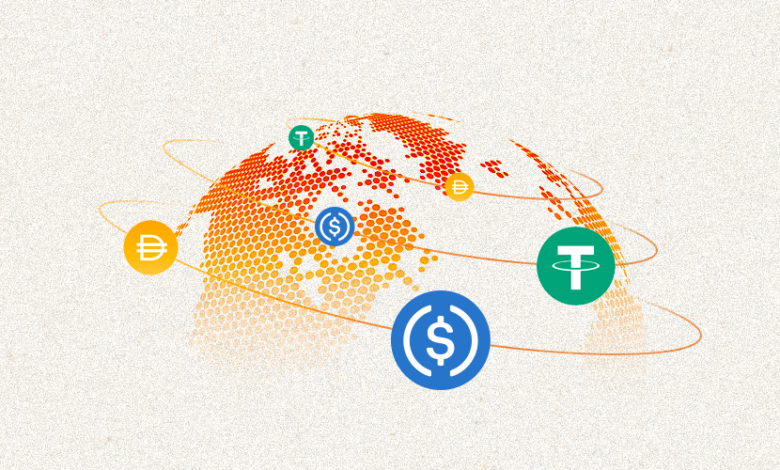The Shift from Bitcoin to Stablecoins in Payments

Stablecoins’ Growing Dominance
Among the first users of these terminals was the CEO of the Web3 company Reality+, Tony Pearce. He notes that while Bitcoin dominates in terms of public attention, stablecoins have become more practical for everyday payments. His point is clear: BTC payments have not grown but instead have stalled. The figures support this, with the US Federal Reserve reporting that the use of cryptocurrencies for transactions dropped to just 1% of the population in 2023.
The rise of stablecoins highlights their dominance in payments. In 2023, Coinbase reported that stablecoins processed over $10.8 trillion in transactions—growing at a 17% annual rate. Comparatively, Bitcoin transactions totaled $8.4 trillion. Payment estimates from Visa suggest stablecoin payments alone amounted to $2.5 trillion in 2023, a significant increase from just $250 billion in 2020.
Key Advantages of Stablecoins
Stablecoins such as USDt, USDC, and BUSD offer key advantages for payments. Their price stability eliminates the volatility of BTC, making them more suitable for merchants and consumers. Transactions on stablecoins occur on blockchain networks like Ethereum layer 2s, BNB Smart Chain, and Solana, providing fast, low-cost confirmations. These networks ensure near-instant payments, which Bitcoin struggles to achieve.
Stablecoins, however, are centralized. The two largest providers, Circle’s USDC and Tether’s USDt, are backed by reserves and subject to regulatory oversight. Unlike Bitcoin, stablecoins require trust from users. Major firms like PayPal and Tesla have also adopted stablecoin payments, highlighting their growing adoption. Stablecoins benefit from simple fiat on- and off-ramps, which streamline adoption compared to the often complex setup of Bitcoin wallets.
Challenges with Bitcoin Payments
Meanwhile, Bitcoin stays considerably slow and expensive. This is because the transaction fees shoot up during periods of stress in Bitcoin. With its block times averaging 10 minutes, Bitcoin struggles to process small-value retail payments. For a while, the Bitcoin network seemed to focus on large-value transfers rather than day-to-day commerce. The Lightning Network is one potential solution; however, it has come at a snail’s pace due to user complexity and due to Bitcoin’s volatility as well.
Meanwhile, the adoption of the Lightning Network is gaining significant traction. According to the data from CoinGate, Bitcoin payments via Lightning grew from 5.98% in 2022 to 7.95% in 2023 and 14.51% in 2024. These indeed promise faster and cheaper transactions than on-chain, with better usability for microtransactions. However, Bitcoin’s Lightning Network still remains a limited area for smaller payments, while stablecoins rule in larger, everyday-like transactions.
The Future of Bitcoin and Stablecoins
Of course, it is not all dead regarding Bitcoin as a means of payment. Yes, some companies have tinkered with allowing BTC payments, like PayPal and Tesla, but the adoption rate has remained low. The store-of-value narrative of Bitcoin is strong. Its use in cross-border settlements, especially in countries with unstable currencies, is quite notable in places like El Salvador, though at a rather slow pace.
Claire Cummings, managing partner at Cummings Pepperdine, explains that Bitcoin is unique in resisting centralized control and regulatory pressure. Bitcoin has an advantage in countries where governments are skeptical of stablecoins tied to fiat.
In the end, though, stablecoins have emerged as the go-to means for everyday payments due to their speed, cost, and stability. Bitcoin, on the other hand, is a decentralized, censorship-resistant store of value. More likely, both will coexist: stablecoins serving in the function of everyday payments, while Bitcoin remains strong as a very long-term investment and a cross-border payment option.
https://www.coinbackyard.com/wp-content/uploads/2025/01/1697206244405.png
2025-01-04 07:00:00




